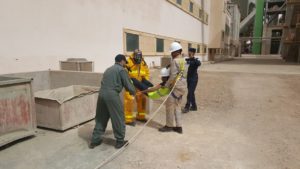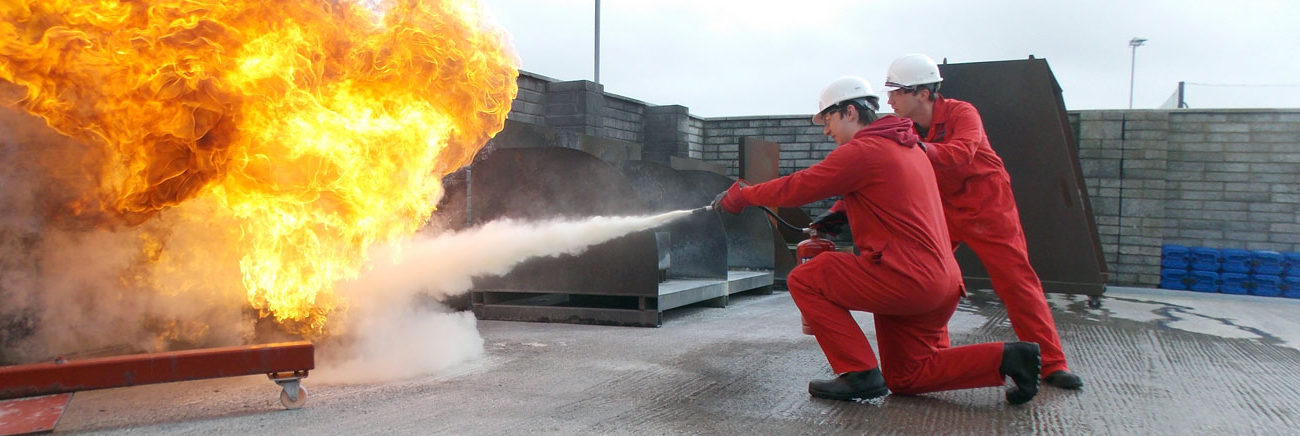30 HOURS training 5 days 6 hours per day
Introduction
The role of Fire Managers is very critical in maintaining the firefighting system and fire alarm system and all related to the fire skills. Evacuation routes and in case of fires, evacuation of all those present in the building or facility. We always try to prevent fires but sometimes things go worst and we have fires at workplaces. Fire Manager is someone with assigned responsibilities to act efficiently in case of follow up and maintenance of the firefighting system and fire alarm system, fire tools fire firefighting system, and fire alarm system, and all related subjects , design and maintenance of evacuation routes and other important skills.
Who Should Attend
This training is designed for Fire Managers, Fire Wardens, HSE Officers, Advisors, Inspectors and anyone having responsibilities in fire evacuations and maintaining means of egress at workplace.
Course Contents
Table of Contents:
Unit No. 1st Day
Unit 1 : Fire Protection
- Fire Protection & Prevention
- Theory of combustion
- Type of Fire
- Type of Extinguishers
- Fire Fighting
- Fundamental Rules
- General Requirements
- Selection and Distribution
- Inspection, maintenance and testing
- P A S S
Unit 2: Fire Alarm System
- Module Overview
- Fire Safety
- Emergency Exits
- Exit routes
- Off – Hour Emergency Exit Plans
- Crisis Response
- Lock Box
- Capacity
- Alarm Systems
- Type of Alarms
- Monitored Alarm
- Addressable Systems
- Local Alarm
- Fire Alarm Control Panel
- Edwards Controls & Indicators
- Enunciators
- Remote Enunciator
- Read – Only Enunciator Panel
- Simples Enunciator Panel
- Fire Alarm Enunciator – Ferber
- Building Floor Plan
- Simples Device Address Listing
- Addressable Smoke Detectors
- Addressable Heat Detectors
- Pull Station
- Guarded Pull Station
- Horns and Strobes
- Control Relay Modules
- ADA Horns & Strobes Requirement
- Areas of Rescue
- Area Rescue Equipments
- Area Rescue Communications
- Preventative Maintenance
- Cleaning Procedure
- Data Retrieval
- Peak Alarms Percentage Sample
- Detector Cleaning
2nd Day
Unit 3: Firefighting system
- Sprinkler Systems and Standpipe Oper.
- Special Considerations
- Operational Sequence Wet Pipe Syst.
- Operational Sequence Dray Pipe
- Operational Sequence Deluge System
- Operational Sequence Pre action Syst.
- Standpipe and Sprinkler System.
- Regulating device
- Rose bud
- Wet system
- Hose stations
- Stand pipe connection
- Stand pipe Operations
- High rise / mall packs
- Alternative methods to supply a sprinkler and / or standpipe system
- Essentials of firefighting
- Fire hose damage – mechanical
- Fire hose damage – Thermal
- Washing hose
- Storing hose
- Threaded fire hose couplings
- Hose appliances
- Hose tools
- Donut roll
- Twin donut roll
- Self locking twin donut roll
- Hose beds
- Hose loading guidelines
- Accordion load
- Flat load
- Finishes for reverse lays
- Pre connected hose loads for attack lines
- Preconnected flat load
- Donning and doffing PPE
- Care of personal protec. clothing
3rd day
Unite 4: Respiratory protection
- Respiratory protection
- Respiratory hazards of fires
- Smoke
- Oxygen deficiency
- Other toxic environments
- Conditions that require respiratory protection
Unit 5: Breathing Apparatus:
- Types of breathing apparatus
- SCBA Standards of Regulations
- Limitations of SCBA
- Physical limitations of the user
- Components of SCBA
- SCBA Regulator operation
- SCBA Face piece assembly
- Pathway of air through an SCBA
- Skip-breathing technique
- Mounting breathing apparatus
- Donning SCBA
- Pre-donning SCBA check
- Safety precautions for SCBA
- Preparing for emergency situations
- Doffing SCBA
- Putting it all together
- SCBA Inspection and maintenance
- Daily inspection
- Monthly inspection
- Annual inspection
- Servicing SCBA cylinders
- Replacing SCBA cylinders
- Refilling SCBA cylinders
- Cleaning and sanitizing SCBA
- Summary
4th day
Unit 6: fire fighter skills
- Introduction
- Fire fighter qualifications
- Fire fighter safety
- Causes of fire fighter deaths and injuries
- Injury prevention
- Standards and procedures
- Personnel
- Training
- Equipments
- Safety and health
- Employee assistance programs
- Fire protection and prevention
Unit 7: Fire Brigades
Unit 8 : FIRST AID
5th day
Practical training
Course Duration
5 days training 6 hours per day with practical training total of 30 hours



